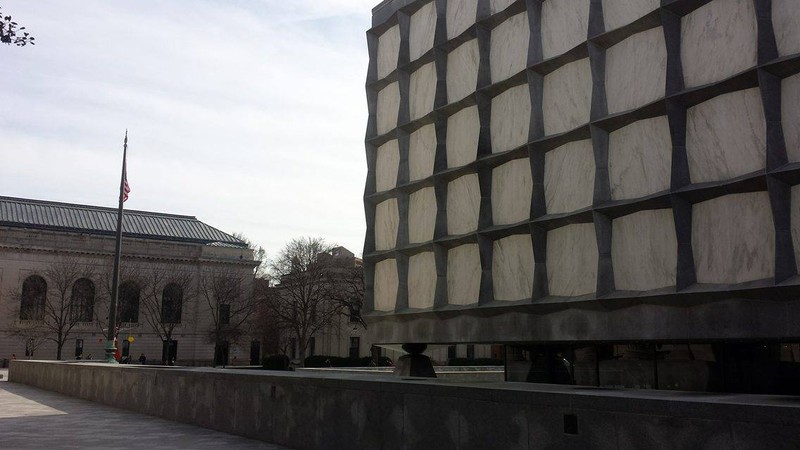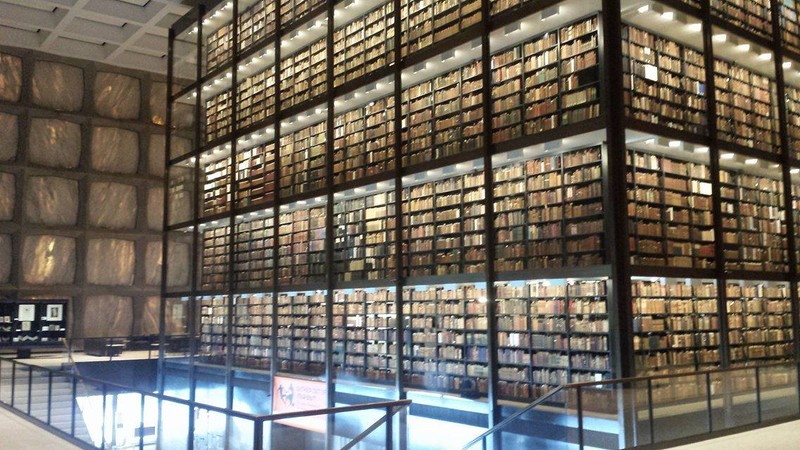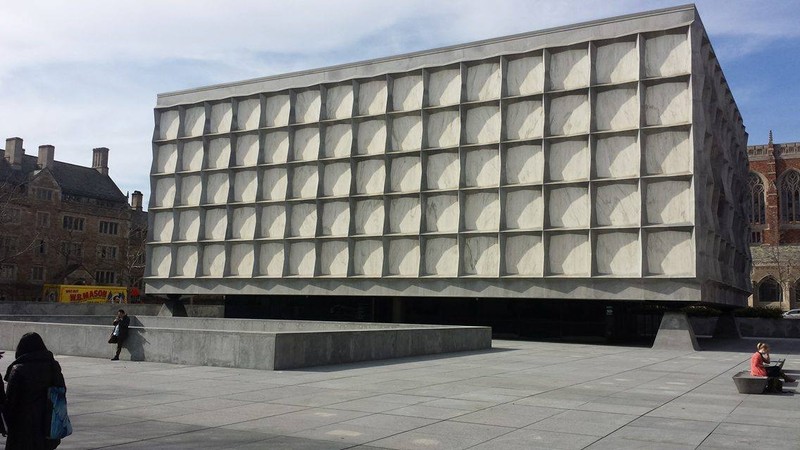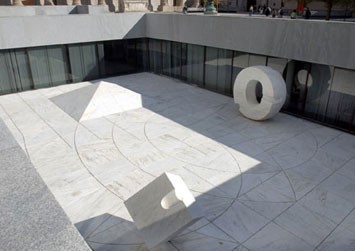Beinecke Rare Book and Manuscript Library
Introduction
Text-to-speech Audio
Images
Beinecke Rare Book and Manuscript Library (source: Burt Westermeier)

Inside the Beinecke: the space is partially lit by natural light filtering through the marble walls. (source: Burt Westermeier)

Beinecke Plaza (source: Burt Westermeier)

The Garden (Pyramid, Sun, and Cube), 1963 (Yale University Visitor Center)

Backstory and Context
Text-to-speech Audio
The library is named after Edwin and Frederick Beinecke, brothers and Yale alumni who donated funds for the Beinecke’s construction. Although the building itself dates to the 1960s, Yale’s manuscript and rare book collection has a much longer history, going back to 1701, the foundation of the College. The ministers who founded Yale donated books to start the library, which gradually expanded thanks to additional donations over the following decades. Yale now owns well over a million manuscripts and volumes.
Famous holdings include a Gutenberg Bible and Audobon's Birds of America, both permanently on display on the mezzanine. Its most mysterious manuscript is undoubtedly the Voynich: an encrypted late medieval work written in an unknown script in an unknown language, containing numerous illustrations of plant life and medicinal herbs, human figures, and various astrological drawings.
Many Beinecke holdings have been digitized and can be viewed online through the library's website.The Garden, a sunken courtyard area on Beinecke Plaza, was designed by Isamu Noguchi in 1963. Made of pale Vermont marble, it features a circle (symbolizing the sun), a pyramid (symbolizing the earth), and a cube (symbolizing chance). The simple design is meant to evoke a Japanese Zen garden and encourage studious contemplation, as befits its location next to the Beinecke reading rooms.
Sources
Rierden, Andi. "The View from: The Beinecke Library at Yale; Modern Pantheon Saves History's Words." New York Times, July 29, 1990.
